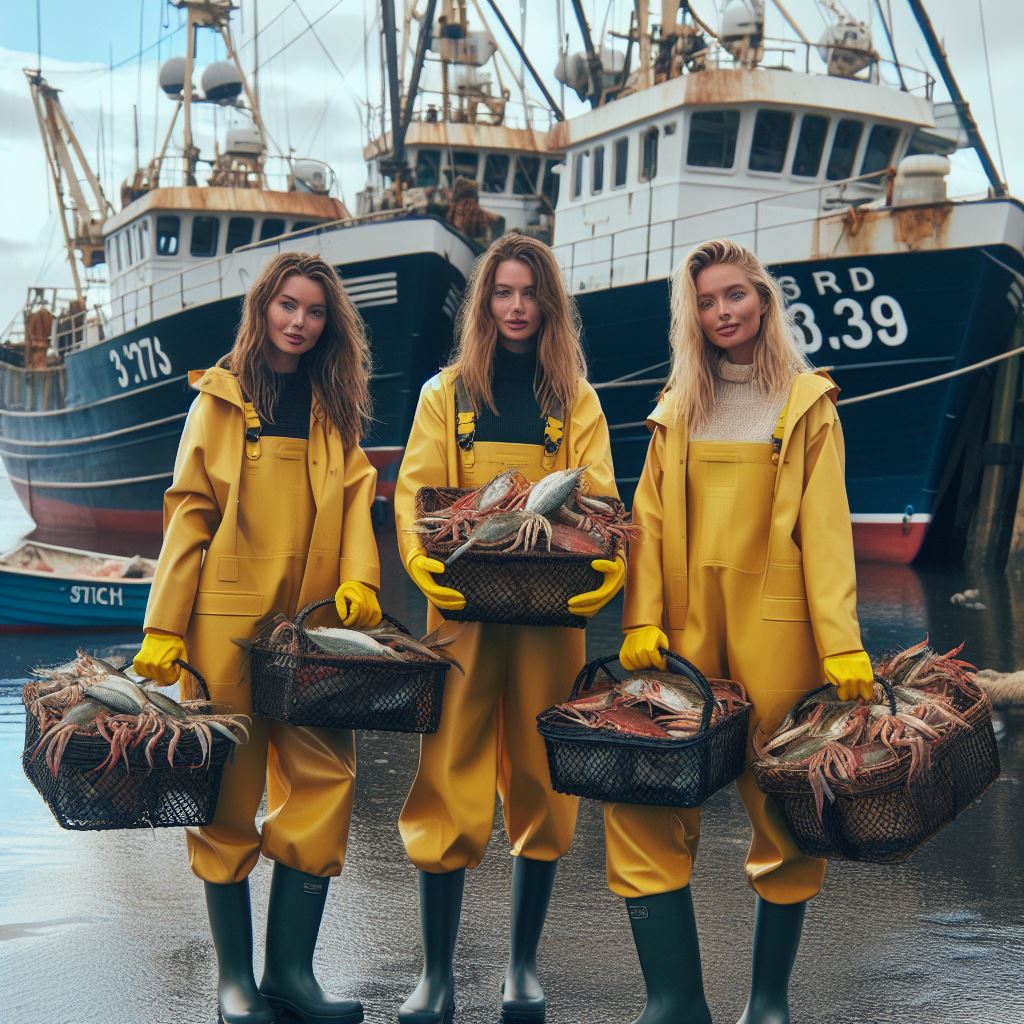Introduction
Australian waters boast a rich diversity of fish species, comprising a tapestry of vibrant marine life that attracts anglers from across the globe.
From the majestic barramundi to the elusive Murray cod, these aquatic inhabitants populate the rivers, lakes, and oceans, offering an unparalleled fishing experience.
This blog post sets sail on a comprehensive journey through the realm of Australian fish species, aiming to serve as an indispensable guide for fishermen navigating the vast expanse of waters.
With a keen focus on providing valuable insights and practical tips, our aim is to equip anglers with the knowledge and expertise needed to reel in their prized catches.
Whether you’re a seasoned angler seeking new challenges or a novice eager to explore the wonders of Australian fishing, this guide promises to be your trusted companion on the quest for the ultimate fishing adventure.
Join us as we dive into the depths of Australian waters, unraveling the secrets of its diverse fish species and unlocking the thrill of angling in this captivating maritime haven.
Overview of Australian Fish Species
The Diversity of Fish Species in Australia
Australia is home to an incredible diversity of fish species, making it a paradise for fishermen. With over 4,000 species found in its waters, both freshwater and saltwater, there is no shortage of options for anglers.
The Great Barrier Reef alone houses around 1,500 species, including colorful coral reef fish like clownfish, angelfish, and butterflyfish.
Beyond the reef, Australia’s coastal waters are teeming with a wide range of fish species such as snapper, barramundi, tuna, and salmon.
In the rivers and lakes, fishermen can encounter iconic Australian fish species like the Murray cod, Australian bass, and golden perch.
Whether you prefer deep-sea fishing, river angling, or lake fishing, Australia has something to offer for everyone.
The Importance of Australian Fish Species in Recreational Fishing
Australian fish species play a vital role in recreational fishing, contributing significantly to the country’s economy and the enjoyment of fishing enthusiasts. Fishing in Australia is not just a hobby; it is a way of life for many locals and a major attraction for tourists.
Recreational fishing provides a substantial boost to regional coastal communities, supporting businesses such as bait and tackle shops, boat rentals, and lodging establishments.
Local economies thrive on the influx of fishing enthusiasts who come to explore and experience the diverse range of fish species in Australia.
Moreover, recreational fishing offers numerous mental and physical health benefits. It provides an opportunity for individuals to connect with nature, reduce stress, and spend quality time with friends and family.
The thrill of reeling in a prized catch creates lasting memories and fosters a deep appreciation for the diverse marine life in Australia.
The Allure of Australian Fishing for both Locals and Tourists
Australian fishing holds immense allure for both locals and tourists, drawing them to explore the country’s vast coastline and inland waters.
The combination of stunning natural landscapes, pristine waters, and abundant fish species creates a truly unforgettable fishing experience.
For locals, fishing is a cherished tradition that has been passed down through generations. It provides an opportunity to connect with their cultural heritage while enjoying the relaxation and excitement that comes with the sport.
Whether it’s a weekend fishing trip or a family gathering on the beach, fishing is deeply embedded in the Australian way of life.
Tourists are equally captivated by the allure of Australian fishing. Many international visitors specifically come to Australia to indulge in the unique angling opportunities it offers.
The chance to catch a trophy-sized barramundi in the Northern Territory or engage in fly fishing in Tasmania’s pristine rivers is a dream come true for fishing enthusiasts worldwide.
In essence, the diversity of fish species, the importance of recreational fishing, and the allure of Australian fishing create an unbeatable combination.
Whether you are a local or a tourist, Australia’s waters beckon you to explore and discover the remarkable world of Australian fish species. Embark on your fishing adventure and create memories that will last a lifetime.
Read: Future of Agriculture: Insights from Aussie Farmers
Common Fish Species in Australian Waters
List of Popular Fish Species Found in Australian Waters
- Snapper
- Barramundi
- Kingfish
- Flathead
- Whiting
- Australian Salmon
Brief Description of each Fish Species, their Appearance, and Behavior
- Snapper: Snapper is a popular fish species in Australian waters. It has a red body with a prominent, large eye and a sharp gill plate. Snappers are known for their aggressive nature and feeding habits, often found near reefs or rocky structures.
- Barramundi: Barramundi is a prized fish species known for its fighting ability. It has a silver or greenish-brown body, with a large mouth and an elongated shape. Barramundis can be found in both freshwater and saltwater environments, often near mangroves or estuaries.
- Kingfish: Kingfish, also known as Yellowtail Kingfish, are powerful and fast swimmers. They have a streamlined body, typically silver in color with a yellowish tint. Kingfish are known for their strength and aggressive feeding behavior, often found near offshore reefs or structures.
- Flathead: Flathead is a common fish species found in Australian estuaries and coastal waters. They have a flat body, brown or olive-colored with dark blotches. Flatheads are ambush predators, lying in wait for their prey, and are commonly caught using bait on the seafloor.
- Whiting: Whiting is a small fish species, popular among anglers for its delicate taste. They have a slim, silvery body with vertical stripes. Whiting are often found in shallow sandy areas and are known for their feeding behavior close to the shoreline.
- Australian Salmon: Australian Salmon, also known as Kahawai or Salmon Trout, are not true salmon but are known for their powerful runs and high jumping ability. They have a torpedo-shaped body, usually dark blue or green on top with silver sides. Australian Salmon are found near beaches, river mouths, and rocky shores.
Preferred Fishing Techniques or Baits for each Species
- Snapper: Snappers can be targeted using baits such as pilchards, squid, or live baitfish. Fishing near reefs or rocky structures with a paternoster rig or soft plastic lures can be effective.
- Barramundi: Barramundis can be caught using lures such as soft plastics, diving lures, or surface poppers. Fishing around mangroves, rock bars, or using live bait like mullet or prawns is popular.
- Kingfish: Kingfish can be targeted with live bait such as yellowtail or squid, or using lures like metal jigs or topwater poppers. Trolling near reefs or jigging vertically can also be effective.
- Flathead: Flatheads are often caught using baits such as pilchards, whitebait, or prawns. Drifting or slow trolling along sandy flats with a paternoster rig or using soft plastic lures can be successful.
- Whiting: Whiting can be caught using baits such as live worms, pipis, or yabbies. Fishing with a long-shank hook on a light leader and casting near the shoreline or sandbanks is commonly practiced.
- Australian Salmon: Australian Salmon can be targeted using metal slugs or lures that imitate small baitfish. Fishing from the shore or casting into schools of feeding salmon can provide exciting action.
In a nutshell, Australian waters are home to a variety of fish species that offer great fishing opportunities. Snapper, barramundi, kingfish, flathead, whiting, and Australian salmon are popular targets for anglers.
Understanding their appearance, behavior, and preferred fishing techniques can greatly enhance the fishing experience.
Read: Challenges Faced by Australian Farmers in 2024
Best Fishing Spots for Various Fish Species
Differentiate between freshwater and saltwater fishing spots
When it comes to fishing spots, understanding the difference between freshwater and saltwater locations is crucial.
Freshwater spots include rivers, lakes, and ponds, while saltwater spots are found in oceans, seas, and estuaries.
Your Personalized Career Strategy
Unlock your potential with tailored career consulting. Get clear, actionable steps designed for your success. Start now!
Get StartedTop fishing locations in Australia for each fish species
Great Barrier Reef for Barramundi
The Great Barrier Reef is a paradise for Barramundi fishing, offering both recreational and professional anglers an unforgettable experience.
Gippsland Lakes for Flathead
Gippsland Lakes in Victoria is known for its abundant Flathead population, attracting fishing enthusiasts from all around Australia and beyond.
Sydney Harbor for Kingfish
Sydney Harbor is a prime location for catching Kingfish, with its deep waters and rocky outcrops providing an excellent fishing environment.
Western Australia’s southern coast for Whiting
The southern coast of Western Australia is renowned for its Whiting fishing, with pristine beaches and clear waters that make it an angler’s dream.
Tips for finding the best spots in specific regions
- Research local fishing reports and forums to gather information about the best fishing spots in your desired region.
- Consult with local anglers or fishing charters who have extensive knowledge about specific fishing spots.
- Look for areas with good underwater structures such as reefs, drop-offs, or submerged vegetation for a higher chance of finding fish.
- Consider the time of year and the fish species you are targeting, as some species migrate or spawn during specific seasons.
- Pay attention to weather conditions and tide patterns, as they can influence fish behavior and feeding activity.
By utilizing these tips, you can increase your chances of finding the best fishing spots across Australia’s vast coastline and inland waterways.
Remember to respect the environment and practice sustainable fishing techniques to preserve these precious habitats for future generations of anglers to enjoy.
Read: Sustainable Farming Practices in Australia

Regulations and Fishing Limits
Importance of Adhering to Fishing Regulations in Australia
- Adherence to fishing regulations is crucial for the sustainability of Australian fish species.
- Following regulations helps maintain the balance of marine ecosystems and conserves fish populations.
- Protecting fish habitats and minimizing the impact on non-target species is possible through adherence to regulations.
- Illegal fishing can harm fish stocks, degrade marine environments, and threaten the survival of certain species.
- By obeying fishing regulations, anglers contribute to preserving Australia’s natural biodiversity for future generations.
Different Fishing Limits and Size Restrictions for Various Fish Species
- Each fish species in Australia has specific fishing limits and size restrictions set by regulatory authorities.
- These regulations aim to ensure the sustainability of each species and maintain their populations within safe levels.
- For example, when fishing for barramundi, the minimum size limit is 55 cm in some regions, while in others, it is 58 cm.
- In some areas, anglers may have a bag limit of two barramundi, whereas in other regions, it could be three.
- Understanding and respecting these limits is crucial to prevent overfishing and depletion of fish stocks.
Information on How to Obtain Fishing Licenses in Different States
- Fishing licenses are required in Australia, and the process of obtaining them varies between different states and territories.
- In New South Wales, anglers can obtain fishing licenses online through the Department of Primary Industries’ website.
- Victoria also provides online license options through the Victorian Recreational Fishing Guide website.
- Queensland residents can purchase licenses online via the Queensland Government website or in-person from authorized retailers.
- Western Australia offers recreational fishing licenses through the Department of Primary Industries and Regional Development.
In Summary, adhering to fishing regulations is essential for the sustainability and preservation of Australian fish species.
Understanding fishing limits and size restrictions for each species is crucial in preventing overfishing.
Fishing licenses can be obtained online or in-person, depending on the state or territory of Australia.
By following these regulations and limits, anglers can enjoy their fishing experience while contributing to the conservation of marine ecosystems and the long-term health of Australian fisheries.
Read: Technology’s Role in Modern Australian Farms
Delve into the Subject: Sustainable Fishing: Practices in Australia
Uncover the Details: Forestry and Climate Change in Australia
Conservation Efforts and Sustainable Fishing
Need for sustainable fishing practices in Australia
- Australia boasts a diverse range of fish species, making sustainable fishing practices crucial.
- Sustainable fishing aims to maintain fish populations while minimizing environmental impact.
- By practicing sustainable fishing, we can ensure the long-term viability of Australian fish species.
- Sustainable fishing practices involve respecting catch limits, using appropriate gear, and avoiding damage to habitats.
Impact of overfishing on Australian fish species
- Overfishing occurs when fish are captured at a faster rate than they can reproduce.
- Australia has witnessed the decline of several fish species due to overfishing.
- The depletion of fish populations disrupts the ecosystem, affecting other marine organisms.
- Overfishing also threatens the livelihoods of commercial and recreational fishermen who rely on healthy fish stocks.
Tips on practicing responsible fishing and supporting conservation efforts
- Stay informed about fishing regulations and adhere to catch limits set by fisheries authorities.
- Use selective gear, such as circle hooks and escape gaps, to minimize unintended catches.
- Practice catch and release whenever possible, ensuring fish are handled with care to maximize survival.
- Support conservation organizations that work towards protecting aquatic habitats and promoting sustainable fishing practices.
- Avoid harvesting fish that are known to be vulnerable or in decline, giving them a chance to recover.
- Engage in responsible angling education programs to learn about sustainable fishing techniques and ethics.
- Participate in citizen science initiatives that help monitor fish populations and contribute to scientific research.
- Dispose of fishing waste, such as lines and hooks, properly to prevent harm to marine life.
- Promote sustainable seafood consumption by choosing certified sustainable products and avoiding endangered species.
- Encourage others to practice responsible fishing and spread awareness about the importance of conservation efforts.
In fact, sustainable fishing practices are essential for protecting Australian fish species and maintaining the health of our marine ecosystems.
Overfishing poses significant threats to fish populations, ecosystem balance, and fisheries-dependent industries.
By adopting responsible fishing practices and supporting conservation efforts, we can ensure the sustainability of Australia’s fish stocks for future generations. Let us all play our part in preserving our rich aquatic biodiversity.
Find Out More: Mining Engineer Paths in Australian Agriculture
Conclusion
In summary, this blog post has provided a comprehensive overview of the diverse range of Australian fish species, highlighting their significance for fishermen across the nation.
Throughout the discussion, we explored the rich biodiversity of Australian waters, showcasing the abundance of fish species inhabiting various marine environments.
From the iconic barramundi to the elusive Murray cod, each species offers unique challenges and rewards for fishermen.
Additionally, we examined the economic and cultural importance of these fish species, underscoring their role in sustaining local fisheries and coastal communities.
Australian fish species hold immense significance for fishermen, serving as both a livelihood and a passion.
These species provide sustenance for commercial and recreational fishing industries alike, contributing to the livelihoods of countless individuals.
Moreover, the thrill of angling for prized catches such as the yellowtail kingfish or the Australian salmon adds an extra dimension of excitement to the fishing experience.
As we conclude, we encourage readers to delve deeper into the diverse range of Australian fish species in their fishing endeavors.
Whether casting lines from the shores of the Great Barrier Reef or venturing into the rugged waters of the Southern Ocean, there are countless opportunities to discover and appreciate the beauty of Australian marine life.
By exploring these fish species, fishermen not only enrich their own experiences but also contribute to the conservation and sustainable management of Australia’s aquatic ecosystems.
In essence, Australian fish species embody the essence of the nation’s marine heritage, offering a tapestry of colors, flavors, and experiences for fishermen to explore and cherish.
So, cast your lines and embark on an adventure into the depths of Australian waters, where every catch tells a story of resilience, diversity, and the enduring bond between man and the sea.
Stand Out with a Resume That Gets Results
Your career is worth more than a generic template. Let us craft a resume and cover letter that showcase your unique strengths and help you secure that dream job.
Get Hired



